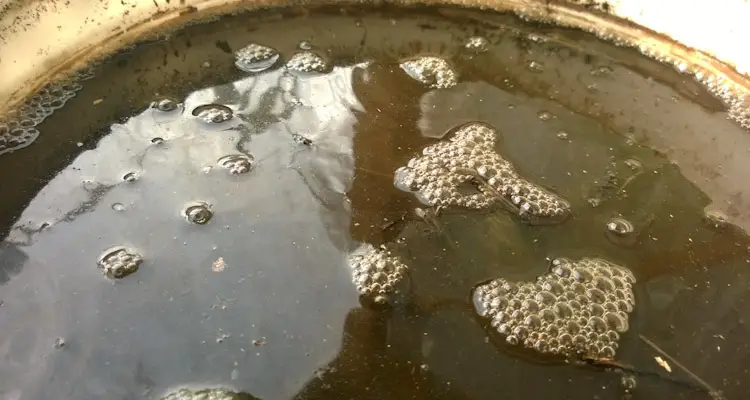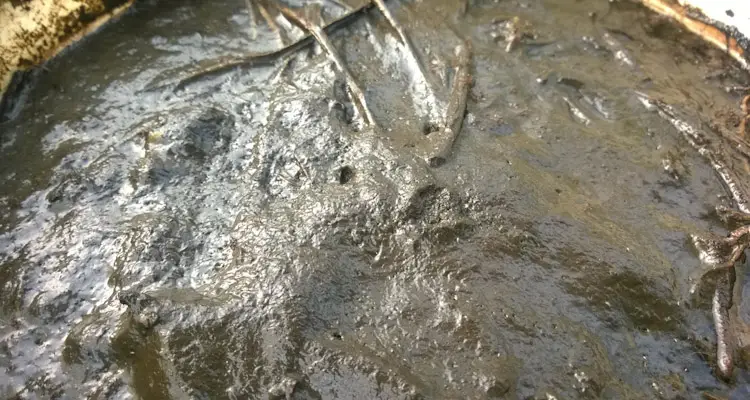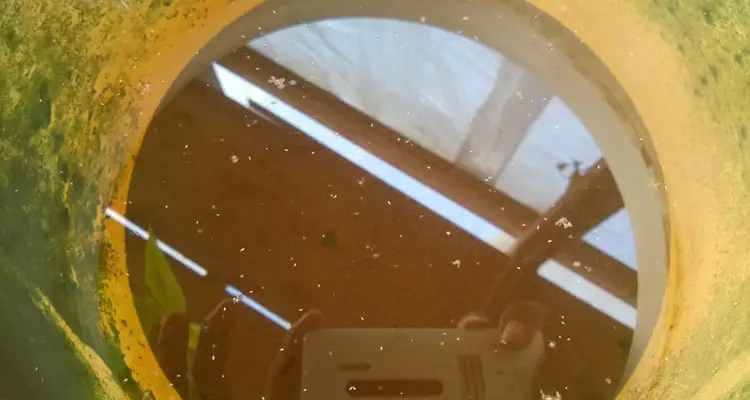Many older farmers swear by the use of human waste as fertilizer. Some even claim that it encourages trees to produce sweeter fruits.
At first, I was a little repulsed by the idea, but I decided to do some research.
You can use processed human waste as a fertilizer after it has undergone the necessary heat, ph, and microorganism treatments, for a period of 6 to 12 months. However, you should not apply these fertilizers directly to parts of plants intended for human consumption.
In this article, we’ll take a closer look at human waste fertilizers and whether or not you may already be eating food produced using it.
Let’s dive in.

How Can Human Waste Be Used As Fertilizer?
Traditionally, many farmers around the world used human waste as fertilizer. It was a common practice until the introduction of flush toilets.
Chances are, if you live in suburban or rural areas, you may have already done so without knowing.
Think of this:
- Have you ever urinated on a tree or in the bushes?
- Is your toilet connected to a septic tank?
If you answered yes to either of these questions, then you unknowingly used human waste to fertilize plants already.
However, when it comes to farming, there are some regulations you must follow if you intend to use these fertilizers commercially.
Here are some basic guidelines derived from various studies in Mexico and Vietnam.
Temperatures of 50°C and above destroy most bacteria. As a result, heat treatment is one of the main methods of sanitizing most organic fertilizers, regardless of the source.
Pathogens thrive in acidic conditions. By raising the PH to over 9.5, we create an unsuitable environment for these pathogens, and as a result, they die off.
Most pathogens require a living host to survive and can survive only a short time outside. As a result, we should allow human waste fertilizers to “age” for at least 6 to 12 months.

These measures sanitize the fertilizer and lessen the likelihood of contamination. However, you should only use these fertilizers on the soil.
The details of the regulations vary from country to country and depend on the source of the waste; raw feces and urine or sewage sludge.
Some of the most popular countries where human manure is used, in one form or another, as fertilizer today are:
- Vietnam
- China
- United Kingdom
- Sweden
- Australia
- USA
- South Korea
- Finland
- Netherlands
- Central America
Many countries in Sub-Saharan Africa have also been experimenting with the use of Human Excreta in Agriculture. However, some food producers have expressed concerns about the possible effect on export.
Which Crops Are Grown Using Human Waste Fertilizers?
Fertilizers made from human waste have been used in various forms to grow crops throughout the ages.
Historically, farmers in China and other Asian countries used raw feces in their rice fields. It has been fermented and used to grow fruits and vegetables in Asia and Central America.
Presently, it is processed into “biosolids” before applying to farmlands in the United States, UK, and other western countries. Here they are used to grow everything from corn to vegetables.
Once used correctly, you can use human waste fertilizer to grow any crop you wish. The results are usually on par with crops grown with cow manure.
These fertilizers are high in nitrogen, phosphate, and many trace minerals.
However, many people still cringe at the thought of eating crops grown with human waste. Surprisingly, chances are we have already been doing so for years.
Remember I mentioned Biosolids? It is the byproduct of sewer sludge treatment.
The majority of biosolids are used for soil preparation of farms, and some spread through forests. You can now even purchase biosolids fertilizer for use in the garden.
Some organizations are concerned about possible contamination from heavy metals and pathogens. However, governments have implemented strict regulations to address these concerns.
How Is Human Waste Converted To Fertilizer? (3 Examples)
Surprisingly, it is not difficult to convert human waste into fertilizer.
Traditionally, this was done by simply throwing kitchen scraps, feces, urine, yard waste, and just about any other organic matter onto a pile and allowing it to compost over time.
Many people still do this today in some rural areas.
However, in keeping with organic regulations, here are three examples of simple fertilizers that you can make at home.

Urine Jadam Liquid Fertilizer
Urine JLF is one of the simplest liquid fertilizers to make. You can make it by collecting urine over a few days then occasionally add some leaf mold to it.
Allow it to ferment at room temperature. You can start using it in 2 weeks.
However, as per organic farming regulations, you need to wait until the fermentation process has ended before you can use it. (6 to 12 months)
It also must be diluted up to 500 times. (It is that rich in nutrients)
Human Feces Jadam Liquid Fertilizer
Human Feces JLF is another simple fertilizer to make. Add some leaf mold to the container with feces, and allow it to break down naturally at ambient temperature. (6 to 12 months)
However, it can be ready to use in 7 to 14 days if heated to 50°C.
As with urine fertilizer, it has to be diluted 50 to 500 times to meet organic regulations.
Humanure Compost
Humanure Compost is almost effortless. You simply add kitchen scraps, leaves, feces, sawdust, ashes, and just about any organic material to a pile or pit.
Just ensure you add enough high carbon material. It will help to manage the scent a bit.
The compost is then allowed to heat up and break down naturally over a year or two.
Is Human Poop a Good Fertilizer?
There is a saying in Korea that nothing is sweeter than crops grown with human manure. Older farmers around the world echo these sentiments as well.
Before the introduction of flush toilets, feces were collected and traded as a treasured agricultural input.
As a fertilizer, human poop is rich in nitrogen, potassium, phosphate, minerals, and beneficial microorganisms. The exact composition varies based on diet, but it provides most of the nutrients plants need to grow.
The pungent odor is renowned as an effective pest repellent in many countries.
However, many people frown upon the use of human excreta.
Some of their main concerns are the presence of hard metals and antibiotics.
The Soil Association, among others, has addressed most of these concerns by providing scientific studies and strict regulations to govern the use of these fertilizers.
The proper use of human waste fertilizer has the potential to revive the soil and lessen the dependence on imported fertilizers, whose prices are ever-increasing.
Final Thoughts:
I was surprised that farmers in different parts of the world share similar sentiments about crops grown using human waste fertilizer.
It was reassuring to find out that regulations and clearly outlined procedures have been put in place to govern the conversion of this waste on small and industrial scales.
While beneficial, the use of human waste as fertilizer will have to overcome many social hurdles.
However, I believe that this ancient practice has a place in the future of food production.
Related Questions
What Is Night Soil In Agriculture?
Night Soil is a historical term for fecal matter: which was collected at night and sold as fertilizer on the outskirts of towns, where sewage systems were not yet operational.
Why Is Human Waste Toxic?
Human waste in itself is not toxic. However, it can harbor harmful bacteria or viruses, which can be destroyed by composting or other treatment processes.
References
Soil Association. A Rock And A Hard Place Report. Soilassociation.org. Accessed July 2021 (PDF Download)
EcoSanRes. Safe Use Of Faeces And Urine. GWP.org. Accessed July 2021 (PDF Download)
